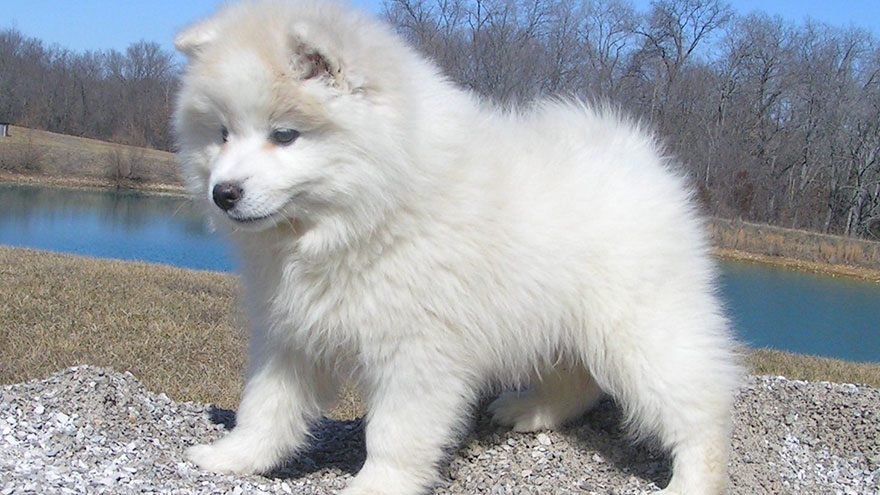How to Care for an American Eskimo
Affectionate, intelligent and great with children are all traits that describe the American Eskimo (sometimes called Spitz). And since “Eskies” come in all sizes–Toy, Miniature and Standard–you can find one to fit any household or lifestyle.
Another interesting fact about American Eskimos: some live to 20! The following tips will hopefully help your Eskie reach a ripe old age–who knows–maybe even the “Big 2-0.”
Complete Care Guide for American Eskimo Dogs
Take your American Eskimo for regular checkups, including eye exams. Do a monthly home exam of the skin, eyes, ears, nose, teeth and gums.
Stay current on vaccines, flea and heartworm preventative.
Spay/neuter your American Eskimo. Spaying your female before the first heat will prevent breast cancer and uterine infections. Neutering your male at a young age will prevent testicular cancer, help maintain a healthy prostate and curb aggression.
Have your Eskie’s teeth cleaned professionally; usually once or twice a year is sufficient. Check with a vet or teeth-cleaning professional for a recommended schedule.
Feed your American Eskimo a quality diet with the proper balance of protein, carbs, fats, fiber, vitamins and minerals. If feeding a commercial dog food, choose a quality natural brand.
Provide your American Eskimo with daily walks and space to run and play. They are energetic and active indoors and will do well in a house or apartment; however, they tend to get bored and gain weight easily if not exercised enough.

Start training your American Eskimo early (if possible) and be gentle and consistent. Since some Eskies tend to be strong-willed you will need to be firm, but never harsh. Due to their intelligence and desire to please, they are normally easy to housebreak, do extremely well with obedience training and have an aptitude for agility and tricks.
Bathe your American Eskimo about every three months. They are good about grooming themselves in the meantime. You can also blow dry and brush out their white coat when it starts to show dirt in between baths. Every three months should be a good schedule for nail trimming as well.
Brush your American Eskimo regularly to prevent matting and do it more frequently during their heavier shedding periods. American Eskimos shed a lot. A metal bristle brush works best on their thick, double coat.
Tips For Care of American Eskimo
American Eskimos may initially be wary of strangers and protective of their guardians until they are assured everything is OK. They tend to bark a lot, but are normally not aggressive.
Eskies thrive on companionship and love being “one of the family.”
American Eskimos usually get along well with other dogs.
The American Eskimo coat does not contain dander, which is good for people with dander allergies.
Many American Eskimos end up at rescues and shelters for various reasons; however, they make sweet, loving pets. If you are an American Eskimo owner, American Eskimo Rescues would be happy to answer any questions and provide training tips. If you are considering adopting an Eskie, the rescues list their dogs up for adoption on their websites and Petfinder.com also lists Eskies that are up for adoption throughout North America.

American Eskimos tend to become bored and destructive if left alone for long periods. Provide them with plenty of stimulating toys and activities. If you work long hours, you might consider a pet sitter or doggie daycare, especially if your American Eskimo is in a one-dog household.
Never shave or clip your American Eskimo; shaving can irritate the skin and increase the chances of sunburn. The coat provides insulation in both cold and warm weather.
The breed has a tendency toward clogged tear ducts which cause fluids to weep out of the eye and leave tear stains. The tear stains are cosmetic and not serious; however, be sure to keep the eye area clean to prevent infection and see a vet if you suspect infection.
The breed may also have a tendency toward hip dysplasia, flea allergy dermatitis (hot spots), cataracts and progressive retinal atrophy (PRA).
The genetic problems result from poor breeding, which is why you should always get a dog from a responsible breeder that you visit in person–or adopt from a shelter or rescue group where they are screened for health issues.

